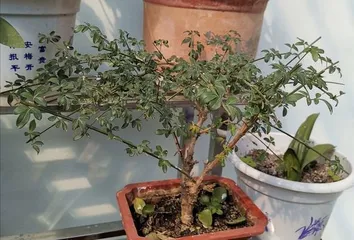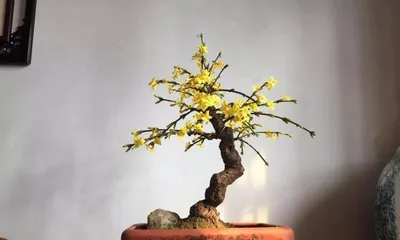Winter jasmine bonsai is one of the essential decorations for the Spring Festival. However, how to properly care for it is a problem that troubles many people. This article will detail how to provide the best care environment for winter jasmine bonsai to make it more vibrant and beautiful during the Spring Festival.

Soil Selection
Selecting soil with good breathability and water retention is key to caring for winter jasmine bonsai. Winter jasmine bonsai prefers soft soil, so when preparing the soil, you can add an appropriate amount of vermiculite or sand to increase its aeration.
Watering Precautions
Winter jasmine bonsai likes a humid environment, but it is also important to control the amount and frequency of watering. Generally, water 2-3 times a week, keeping the soil slightly moist.

Fertilizer Application
During the growing season, you can apply liquid fertilizer once a month to provide sufficient nutrients. When fertilizing, you can mix in a moderate amount of well-rotted organic fertilizer to increase the soil's fertility.
Sunlight Exposure
Winter jasmine bonsai needs plenty of sunlight, but it should also be protected from scorching sun. Generally, place the winter jasmine bonsai in a sunny spot when the sunlight is gentler, in the morning or evening.
Temperature Control
Winter jasmine bonsai prefers a warm environment, with the most suitable growing temperature being around 20°C-25°C. In winter, you can use heating devices or heaters to appropriately adjust the indoor temperature.

Leaf Care
The leaves of winter jasmine bonsai can easily accumulate dust, so they need to be cleaned regularly. You can gently wipe the leaves with a damp cloth or a soft brush to maintain their luster.
Pruning Techniques
Winter jasmine bonsai grows quickly and requires regular pruning. When pruning, select healthy branches and leaves to trim, and pay attention to maintaining the overall shape and proportion of the bonsai.
Pest Control
Winter jasmine bonsai is susceptible to aphids and whiteflies, so regular prevention and control are necessary. You can spray with plant protection agents or a solution of household detergent, and remember to regularly clear away fallen leaves and weeds.
Repotting Techniques
When the winter jasmine bonsai grows too fast and the roots start to intertwine closely, it needs to be repotted. When repotting, choose a new pot of appropriate size, fill the bottom with moist soil, then gently remove the original soil ball, place it in the new pot, and firm it down.
Preventing Overgrowth
Overgrowth of winter jasmine bonsai can affect its aesthetics, so measures need to be taken to prevent it. You can trim back some of the rapidly growing branches to keep the bonsai in good shape.
Maintaining Ventilation
Winter jasmine bonsai needs sufficient air circulation to prevent the breeding of pests and diseases. In spring and summer, you can open windows or turn on air conditioning to increase indoor air circulation.
Regularly Changing Soil
Using the same soil for a long time can cause the soil to age, which in turn affects the bonsai's growth. It is recommended to change the soil once in the spring or autumn each year to ensure the soil's fertility and aeration.
Increasing Humidity
Winter jasmine bonsai needs appropriate humidity to grow, but the air is very dry in winter, which can easily cause the bonsai leaves to wither. You can increase indoor air humidity by using a humidifier, placing a damp towel, or other methods.
Safety Precautions
When using plant protection agents such as fertilizers and pesticides, safety must be considered. It is recommended to choose organic plant protection agents and wear protective equipment such as gloves and masks to avoid contact with toxic chemicals.
Caring for winter jasmine bonsai requires meticulous attention, but as long as you master some basic techniques, you can help the bonsai present its most beautiful state during the Spring Festival. I hope this article can be helpful to you, making your winter jasmine bonsai healthier and more beautiful.